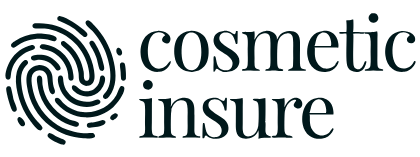Full Body Ultrasound MOT Scan: A Comprehensive Health Check

Written by Vigen In today’s fast-paced world, maintaining optimal health is more important than ever. Regular health check-ups are essential to identifying potential issues early, preventing future complications, and ensuring overall well-being. One such advanced and non-invasive diagnostic tool gaining popularity is the Full Body Ultrasound MOT Scan. This cutting-edge scan provides a detailed overview of your internal organs, offering valuable insights into your health. At Astrum Medical, we are proud to offer this advanced diagnostic service, giving you access to the latest technology and expert care in a welcoming environment. What is a Full Body Ultrasound MOT Scan? A Full Body Ultrasound MOT Scan is a non-invasive diagnostic test that uses high-frequency sound waves to produce detailed images of the internal organs and tissues. Unlike CT scans or MRIs, ultrasounds do not use radiation, making them a safer option for many patients. This type of scan covers multiple areas of the body, including: Abdomen: Liver, gallbladder, pancreas, kidneys, spleen, and major blood vessels. Pelvis: Bladder, uterus and ovaries (for women), or prostate (for men). Thyroid: Screening for abnormalities or nodules in the thyroid gland. Vascular System: Assessment of blood flow and identification of any blockages or abnormalities in major arteries and veins. The Full Body Ultrasound MOT Scan is designed to provide a comprehensive assessment of the body’s key systems, ensuring that any underlying issues are detected early. At Astrum Medical, our skilled practitioners perform the scan using advanced equipment, ensuring accurate and reliable results. How Does an Ultrasound Work? Ultrasound technology uses sound waves to create images of the internal structures of the body. A small handheld device called a transducer is placed on the skin after applying a special gel to improve contact and conductivity. The transducer emits sound waves that bounce off internal tissues, creating echoes. These echoes are then converted into detailed images by a computer, allowing healthcare professionals to analyse the condition of internal organs and tissues in real-time. Benefits of a Full Body Ultrasound MOT Scan A Full Body Ultrasound MOT Scan offers numerous advantages, making it an invaluable tool in preventative healthcare: 1. Non-Invasive and Painless Unlike some other diagnostic procedures, ultrasounds do not involve surgery, needles, or any invasive techniques. The procedure is completely painless, with most patients feeling only slight pressure during the scan. 2. No Radiation Exposure Unlike X-rays or CT scans, ultrasounds use sound waves rather than ionising radiation, making them safer for individuals who require regular monitoring or are concerned about radiation exposure. 3. Early Detection of Health Issues The scan can detect a wide range of conditions, from gallstones and kidney issues to vascular abnormalities and tumours. Early detection of such conditions allows for prompt treatment and better outcomes. 4. Comprehensive Health Overview With its ability to assess multiple organs and systems in a single session, a Full Body Ultrasound MOT Scan provides a holistic view of your health. 5. Quick and Convenient The procedure typically takes 60–90 minutes, and you can return to your daily activities immediately after. The results are often available quickly, allowing for timely follow-up if needed. At Astrum Medical, we aim to make this process as seamless and efficient as possible, prioritising your comfort and convenience. What Can a Full Body Ultrasound MOT Scan Detect? The Full Body Ultrasound MOT Scan is a versatile diagnostic tool capable of detecting various conditions, including: Abdominal Issues: Liver conditions, such as fatty liver disease or cirrhosis. Gallstones or inflammation of the gallbladder. Pancreatic abnormalities. Kidney stones or cysts. Abnormalities in the spleen. Thyroid Disorders: Enlargement of the thyroid gland. Nodules or cysts that may require further evaluation. Pelvic Concerns: Ovarian cysts, fibroids, or other uterine abnormalities in women. Prostate enlargement or irregularities in men. Vascular Health: Blockages, narrowing, or aneurysms in major arteries. Blood clots or abnormal blood flow in veins. Soft Tissue and Lymph Nodes: Enlarged lymph nodes that could indicate infection or other conditions. Evaluation of soft tissue abnormalities, such as lumps or swelling. By identifying these issues early, a Full Body Ultrasound MOT Scan helps guide further diagnostic tests or treatments if necessary. Who Should Consider a Full Body Ultrasound MOT Scan? A Full Body Ultrasound MOT Scan is suitable for a wide range of individuals, particularly those who want to take a proactive approach to their health. Ideal candidates include: Individuals with Family History of Health Issues: Those with a genetic predisposition to conditions such as liver disease, kidney issues, or thyroid disorders can benefit from regular monitoring. People Over 40: As the risk of various health conditions increases with age, a comprehensive scan can help identify potential problems early. Those with Unexplained Symptoms: Persistent abdominal pain, swelling, or other unexplained symptoms warrant investigation. Health-Conscious Individuals: Even if you have no symptoms, a Full Body Ultrasound MOT Scan can provide peace of mind by confirming that everything is functioning well. At Astrum Medical, we welcome patients from all walks of life and tailor the scan to meet individual needs. How to Prepare for a Full Body Ultrasound MOT Scan Preparation for the scan varies depending on the areas being examined. Here are some general guidelines: Abdominal Scan: You may be asked to fast for 6–8 hours before the procedure to reduce gas in the stomach and ensure clearer images. Pelvic Scan: A full bladder may be required, so you might need to drink water before the appointment. Other Areas: No special preparation is usually needed, but it’s important to follow any specific instructions provided by your healthcare provider. At Astrum Medical, our team provides clear and comprehensive instructions to ensure a smooth and stress-free experience. Why Choose Astrum Medical for Your Full Body Ultrasound MOT Scan? At Astrum Medical, we are dedicated to providing exceptional care and state-of-the-art diagnostic services. Here’s why patients trust us: Expertise: Our experienced sonographers and healthcare professionals deliver accurate and detailed results. Advanced Technology: We use the latest ultrasound equipment to ensure the highest quality imaging. Patient-Centred Care: Your comfort and well-being are
Tranexamic Acid Mesotherapy for Pigmentation: Melasma Treatment

Written by Dr Vahe Pigmentation concerns, including melasma, sunspots, and post-inflammatory hyperpigmentation, affect millions of people globally. These issues can be stubborn and challenging to treat, often requiring a combination of advanced therapies for effective results. Tranexamic Acid Mesotherapy is gaining recognition as a revolutionary melasma treatment for pigmentation, offering impressive outcomes with minimal invasiveness. In this blog, we’ll explore how Tranexamic Acid Mesotherapy works, its benefits, and why combining it with Pico Laser treatment could provide even better results. If you’re considering addressing pigmentation, this innovative treatment is available at Astrum Medical Clinic, where you can also combine it with Pico Laser for a comprehensive skincare solution. What is Tranexamic Acid? Tranexamic acid is a synthetic derivative of lysine, an amino acid. It has been widely used in medicine to reduce excessive bleeding, as it inhibits plasminogen activation, preventing the breakdown of fibrin clots. In dermatology, tranexamic acid has shown remarkable benefits in managing pigmentation disorders, particularly melasma, by targeting the root causes of pigmentation formation. How Does Tranexamic Acid Help with Pigmentation? Tranexamic acid works by inhibiting the interaction between melanocytes (pigment-producing cells) and keratinocytes (skin cells). It reduces the production of melanin, the pigment responsible for skin colour, which is overproduced in pigmentation disorders. Key mechanisms include: Reducing UV-induced pigmentation: Tranexamic acid decreases melanin production triggered by sun exposure. Regulating inflammatory responses: It suppresses inflammatory mediators that exacerbate pigmentation. Preventing vascular component formation: By reducing blood vessel growth, it minimises the vascular contribution to conditions like melasma. These properties make tranexamic acid a highly effective ingredient for treating stubborn pigmentation issues. What is Tranexamic Acid Mesotherapy? Tranexamic Acid Mesotherapy involves the injection of tranexamic acid directly into the dermis, targeting the pigmented areas. Mesotherapy allows for deeper penetration compared to topical creams, ensuring the active ingredient reaches the precise layer of skin where pigmentation develops. This minimally invasive procedure delivers concentrated doses of tranexamic acid, providing faster and more noticeable results than topical treatments alone. How is Tranexamic Acid Mesotherapy Performed? The procedure is straightforward and relatively quick: Consultation: A qualified practitioner evaluates your skin type, pigmentation concerns, and suitability for treatment. Preparation: The treatment area is cleansed, and a numbing cream may be applied to ensure comfort. Injection: Using fine needles or a mesotherapy device, small amounts of tranexamic acid are injected into the pigmented areas. Post-Treatment Care: After the procedure, soothing creams are applied, and aftercare instructions are provided. Each session typically takes 20–30 minutes, and most patients require a course of 4–6 treatments spaced two weeks apart for optimal results. Benefits of Tranexamic Acid Mesotherapy as a Melasma Treatment Tranexamic Acid Mesotherapy offers several advantages for treating pigmentation: 1. Highly Effective This treatment directly targets pigmentation at its source, making it especially effective for melasma, which is often resistant to other treatments. 2. Minimally Invasive Unlike laser treatments or chemical peels, mesotherapy involves minimal downtime and discomfort. 3. Safe for All Skin Types Tranexamic acid is gentle and suitable for all skin tones, including darker skin, which can be prone to post-inflammatory pigmentation. 4. Fast and Convenient With quick treatment sessions and minimal recovery time, it’s easy to fit into a busy schedule. 5. Improves Skin Quality In addition to reducing pigmentation, mesotherapy can enhance overall skin texture and radiance. Combining Tranexamic Acid Mesotherapy with Pico Laser Treatment While Tranexamic Acid Mesotherapy is highly effective on its own, combining it with Pico Laser treatment can produce even better results. This combination approach targets pigmentation at multiple levels, ensuring more comprehensive skin rejuvenation. How the Combination Works: Pico Laser Treatment: The Pico Laser uses ultra-short pulses to break down pigmented particles in the skin. This clears superficial pigmentation and prepares the skin for the next step. Tranexamic Acid Mesotherapy: Two weeks after the Pico Laser treatment, mesotherapy is performed to target deeper pigmentation and regulate melanin production at a cellular level. By addressing both the surface and deeper layers of the skin, this dual approach provides faster, more noticeable results and long-term benefits. Why Two Weeks? Allowing a two-week gap between treatments ensures the skin has time to heal and recover from the laser procedure before undergoing mesotherapy. This timing maximises safety and effectiveness. Who is a Good Candidate for Tranexamic Acid Mesotherapy? Tranexamic Acid Mesotherapy is suitable for most individuals looking to address pigmentation concerns. It’s particularly beneficial for: People with melasma, which can be difficult to treat with other methods. Those with sunspots, freckles, or post-inflammatory hyperpigmentation. Individuals who prefer minimally invasive treatments with little downtime. However, it may not be suitable for individuals who: Have active skin infections or conditions like eczema in the treatment area. Are pregnant or breastfeeding. Are allergic to tranexamic acid. A consultation with a qualified practitioner is essential to determine if this treatment is right for you. What to Expect During and After Treatment During Treatment Most patients find the procedure tolerable, with minimal discomfort. The use of a numbing cream further enhances comfort. After Treatment Mild redness or swelling may occur but typically resolves within a few hours. You can return to your daily activities immediately after treatment. Sunscreen use is essential to protect the treated skin and prevent further pigmentation. Results Visible improvement is usually seen after the first few sessions, with significant changes after completing the full course. Skin appears brighter, more even-toned, and radiant. Why Choose Tranexamic Acid Mesotherapy at Astrum Medical Clinic? At Astrum Medical Clinic, we specialise in advanced treatments for pigmentation, offering personalised care and state-of-the-art solutions. Our team of qualified practitioners ensures that each treatment is tailored to your specific needs, combining expertise with the latest technologies. Why choose us? Expertise in pigmentation treatments, including Tranexamic Acid Mesotherapy and Pico Laser. Advanced equipment and medical-grade products. A patient-focused approach to deliver safe and effective results. Maintaining Results While Tranexamic Acid Mesotherapy provides long-lasting results, maintenance is essential to prevent pigmentation from returning. Tips for maintaining results: Wear
Pico Laser for Pigmentation Treatment: A Groundbreaking Solution for Clear Skin
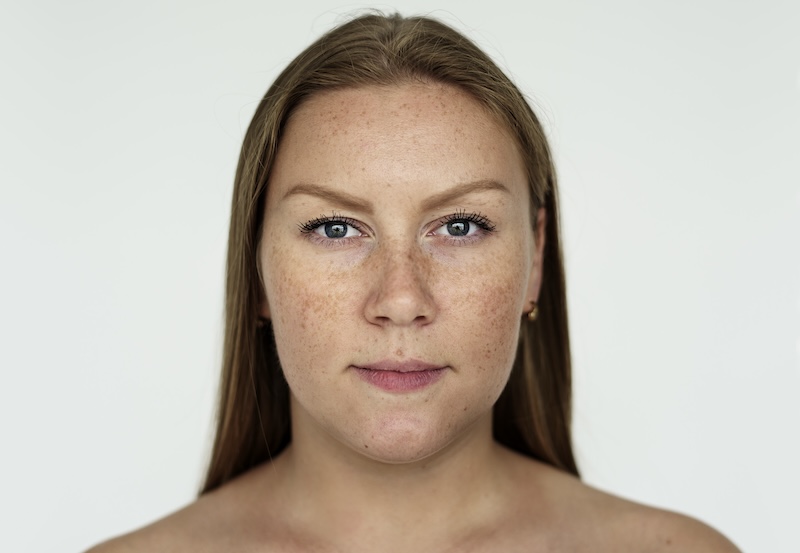
Written and reviewed by Dr Vahe Uneven skin tone, dark spots, and pigmentation issues are common skin concerns faced by many. Whether caused by sun exposure, hormonal changes, ageing, or skin conditions like melasma, pigmentation can be frustrating and impact self-confidence. Fortunately, advances in aesthetic medicine have provided effective solutions, with Pico Laser emerging as a groundbreaking pigmentation treatment. In this blog, we’ll explore how Pico Laser works, its benefits, and why it has become a trusted choice for those seeking clearer, more radiant skin. And if you’re considering this treatment, you can book it at Astrum Medical Clinic, where we offer advanced laser treatments tailored to your needs. What is Pigmentation? Pigmentation refers to the colour of the skin, determined by melanin production. An imbalance in melanin distribution can lead to hyperpigmentation, where patches of skin appear darker than the surrounding areas. Common causes of pigmentation include: Sun exposure: UV rays can stimulate excess melanin production, leading to sunspots or freckles. Hormonal changes: Conditions like melasma often arise during pregnancy or as a side effect of contraceptives. Ageing: Age spots, also called liver spots, are common in older adults. Skin trauma: Post-inflammatory hyperpigmentation can occur after acne, injuries, or other skin conditions. These pigmentation issues are notoriously challenging to treat with traditional skincare products, making professional treatments like Pico Laser a game-changer. Understanding Pico Laser Technology Pico Laser is a state-of-the-art technology that delivers ultra-short bursts of energy in picoseconds (trillionths of a second). This precision allows the laser to target pigmentation effectively without causing heat damage to the surrounding skin. Unlike older laser technologies, which rely on thermal energy to break down pigmentation, Pico Laser uses photomechanical effects. This ensures better results with minimal discomfort and reduced downtime. How Does Pico Laser Treat Pigmentation? Pico Laser works by targeting melanin within the pigmented areas. The laser energy breaks the melanin into tiny particles, which the body’s lymphatic system naturally clears over time. The treatment is highly versatile and can address a range of pigmentation issues, including: Sunspots and freckles: Lightens and reduces discolouration caused by UV damage. Melasma: Treats deeper pigmentation issues with greater precision and safety. Post-inflammatory hyperpigmentation: Fades dark marks left by acne or skin injuries. Age spots: Minimises discoloured patches associated with ageing. The technology’s adaptability also makes it suitable for all skin types, a significant advantage over traditional lasers that may not be safe for darker skin tones. Pico Laser for Pigmentation: Key Benefits 1. Precision Treatment The ultra-short pulses of Pico Laser allow for pinpoint accuracy, targeting only the pigmented areas while leaving healthy skin untouched. This reduces the risk of damage and ensures faster healing. 2. Effective Results Pico Laser can significantly lighten or eliminate pigmentation in just a few sessions. Many patients notice visible improvements after their first treatment. 3. Minimal Discomfort Traditional lasers often generate heat, which can cause discomfort or burns. Pico Laser’s photomechanical approach minimises pain, with most patients describing the sensation as a light snapping or tingling. 4. Reduced Downtime With no thermal damage to the skin, Pico Laser requires little to no recovery time. Patients can return to their daily activities immediately after treatment. 5. Versatility Pico Laser is not limited to pigmentation treatment. It is also effective for tattoo removal, acne scars, and skin rejuvenation, making it a multi-purpose solution for various skin concerns. What to Expect During a Pico Laser Treatment Consultation Before starting treatment, a consultation with a qualified practitioner is essential. During this session, your skin concerns will be assessed, and the practitioner will determine whether Pico Laser is suitable for your needs. Treatment Process Cleansing: The area to be treated is cleansed to remove any makeup, dirt, or oils. Numbing Cream (if needed): While Pico Laser is generally well-tolerated, a numbing cream may be applied for added comfort. Laser Application: The practitioner uses the laser device to target the pigmented areas. Each session typically lasts 15–30 minutes, depending on the size and severity of the treated area. Aftercare After treatment, the skin may appear slightly red or feel warm, similar to a mild sunburn. These effects usually subside within a few hours. The practitioner will provide aftercare instructions, which may include: Avoiding sun exposure and using a high-SPF sunscreen. Keeping the skin moisturised. Avoiding harsh skincare products for a few days. How Many Sessions Are Required? The number of sessions needed depends on the severity and type of pigmentation. For most pigmentation issues, 3–6 sessions spaced 4–6 weeks apart yield optimal results. However, every individual’s skin responds differently, so personalised treatment plans are essential. Who is Suitable for Pico Laser Treatment? Pico Laser is suitable for most individuals seeking to address pigmentation or achieve a clearer complexion. However, certain factors may affect eligibility, including: Active skin infections or conditions like eczema in the treatment area. Pregnancy or breastfeeding. Recent tanning or use of tanning products. A consultation with a qualified professional is crucial to ensure the treatment is appropriate for your skin type and concerns. Why Choose Pico Laser Over Other Treatments? While several treatments are available for pigmentation, including chemical peels, microdermabrasion, and IPL (Intense Pulsed Light), Pico Laser stands out for its effectiveness and safety. Comparison with IPL: IPL uses broad-spectrum light to target pigmentation, but it can cause heat damage to the skin and is less effective on deeper pigmentation issues like melasma. Pico Laser’s photomechanical action ensures deeper penetration and safer treatment for all skin types. Comparison with Chemical Peels: Chemical peels exfoliate the skin and can lighten pigmentation, but they require significant downtime and carry a risk of irritation. Pico Laser offers faster recovery and more precise results. Why Book Pico Laser Treatment at Astrum Medical Clinic? At Astrum Medical Clinic, we pride ourselves on offering cutting-edge treatments delivered by experienced professionals. Our team is dedicated to helping you achieve your skincare goals in a safe and comfortable environment. Why choose us? Advanced Pico Laser technology for
Which PRP Tube is Better: Sodium Citrate or ACD?

Written and reviewed by Dr Vahe Platelet-Rich Plasma (PRP) therapy is transforming medicine, from aesthetics to orthopaedics, offering a natural solution to rejuvenate skin, restore hair, and promote healing. But did you know that the choice of tube used to prepare PRP can significantly impact the results? The debate often comes down to two anticoagulants: Sodium Citrate and ACD (Acid Citrate Dextrose). Both prevent blood from clotting during preparation, but their differences make them more suitable for certain applications. Let’s dive into the science to understand which might be the better choice for your treatment. How Do These Anticoagulants Work? Sodium Citrate: This anticoagulant works by binding to calcium, a mineral necessary for blood clotting. It keeps platelets in their natural, “resting” state, reducing the risk of early activation during PRP preparation. ACD (Acid Citrate Dextrose): ACD also binds calcium to stop clotting but adds citric acid and dextrose. The citric acid lowers the pH slightly, which primes platelets to activate more quickly during treatment. The dextrose provides energy to the platelets, keeping them viable. What Does This Mean for Treatments? Platelet Activation Sodium citrate preserves platelets in a calm state, allowing for controlled activation. This is ideal for aesthetic procedures such as facial rejuvenation or delicate skin treatments, where precision is key. ACD, on the other hand, slightly primes platelets for faster activation. This is beneficial for aesthetics, orthopaedics and hair restoration, where rapid growth factor release is essential to stimulate healing or regrowth. Growth Factor Release ACD tubes are known to release higher levels of growth factors because of their mildly acidic environment. These growth factors, including PDGF (platelet-derived growth factor) and VEGF (vascular endothelial growth factor), are crucial for regenerating tissues and boosting collagen production. Stability and Timing ACD keeps PRP stable for longer, making it ideal if there’s a delay between preparation and treatment. Sodium citrate is less stable, so PRP prepared with these tubes should ideally be used immediately. Which PRP Treatment Tube Is Better for You? For Patients Seeking Skin Rejuvenation or Fine Facial Work: Sodium citrate is usually the preferred choice. Its ability to keep platelets in a resting state ensures a smoother, controlled release of growth factors for precision results. For Hair Restoration or Rapid Tissue Healing: ACD is the clear winner. Its ability to prime platelets ensures a faster and more potent release of the growth factors needed for regrowth and repair. Why Does This Matter? PRP therapy is a personalised treatment, and every detail matters—from the expertise of your clinician to the tools and techniques used. While both sodium citrate and ACD tubes are effective, their differences can impact the results of your treatment. If you’re a patient, it’s worth discussing with your clinician which tube is being used and why. If you’re a doctor, understanding the unique benefits of each anticoagulant can help tailor treatments for the best outcomes. A Natural Boost, Tailored to You Whether you’re seeking to rejuvenate your skin, restore your hair, or heal an injury, PRP therapy offers incredible potential. By choosing the right tube for the right treatment, clinicians can help patients achieve better, faster, and more reliable results. For more insights into PRP therapy and tailored treatments, speak to your healthcare provider. Sources This blog is based on clinical insights and published studies exploring the effectiveness of PRP preparation methods. If you’d like to learn more, please get in touch with us or refer to trusted medical journals.
5 Benefits of Laser Hair Removal for PCOS
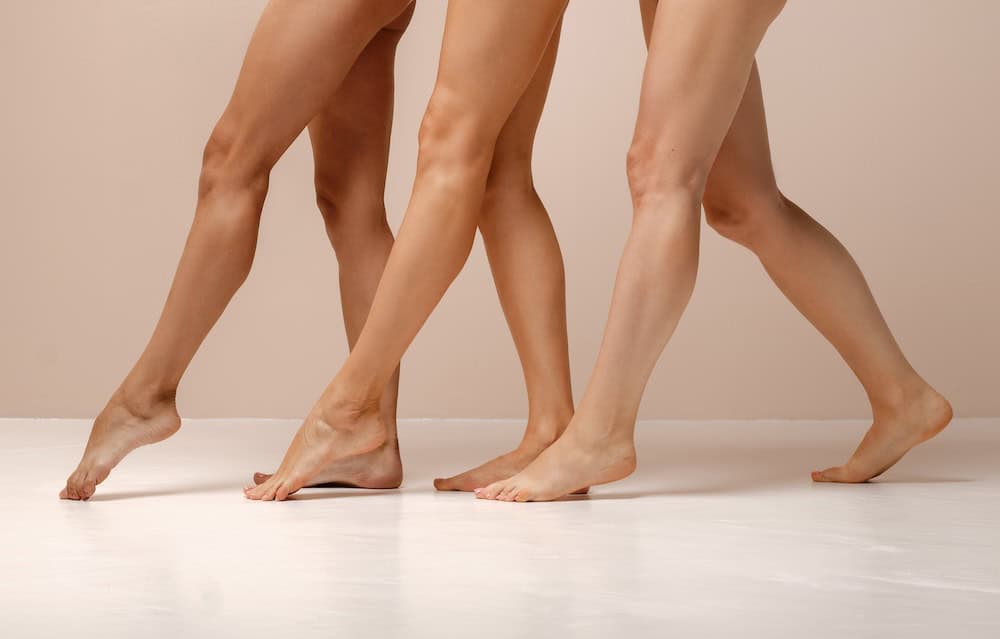
Written by Dr Vahe Polycystic Ovary Syndrome (PCOS) is a hormonal disorder that affects millions of women worldwide. One of the most common symptoms of PCOS is excessive hair growth, often referred to as hirsutism. This condition can be emotionally distressing and significantly impact a woman’s self-esteem. Laser hair removal offers a safe and effective solution for women with PCOS to manage unwanted hair growth. Understanding PCOS and Hirsutism PCOS is a complex condition characterized by an imbalance of hormones, leading to irregular periods, acne, and excessive hair growth. In women with PCOS, the ovaries produce higher-than-normal levels of androgens, male hormones that can stimulate hair growth in areas where women typically don’t have much hair, such as the face, chest, back, and abdomen. Hirsutism can be a particularly challenging aspect of PCOS. It can be difficult to manage with traditional hair removal methods like shaving, waxing, or tweezing, as these methods only temporarily remove hair. Laser hair removal, on the other hand, offers a long-lasting solution by targeting the hair follicles and reducing hair growth over time. How Laser Hair Removal Works Laser hair removal is a non-invasive procedure that uses a laser to target the pigment in the hair follicle. The laser energy is absorbed by the pigment, which then converts the light energy into heat. This heat damages the hair follicle, preventing it from producing new hair. The Benefits of Laser Hair Removal for PCOS Laser hair removal offers numerous benefits for women with PCOS, including: Long-lasting results: Laser hair removal can significantly reduce hair growth over time, leading to smoother, hair-free skin. Reduced ingrown hairs: Shaving and waxing can cause ingrown hairs, which can be painful and unsightly. Laser hair removal can help reduce the risk of ingrown hairs. Improved self-esteem: Excessive hair growth can be a significant source of self-consciousness and low self-esteem. Laser hair removal can help women with PCOS feel more confident and comfortable in their own skin. Time-saving: Traditional hair removal methods can be time-consuming and require frequent maintenance. Laser hair removal can save you time and effort in the long run. Safe and effective: When performed by qualified professionals, laser hair removal is a safe and effective procedure. Choosing the Right Laser Hair Removal Clinic When considering laser hair removal, it is essential to choose a reputable clinic with experienced professionals. Astrum Laser Clinic is a leading provider of laser hair removal services, offering treatments under the supervision of qualified doctors. Our team of experts uses advanced laser technology to deliver safe, effective, and long-lasting results. We understand the unique needs of women with PCOS and can tailor our treatments to address their specific concerns. Book a Consultation Today If you are a woman with PCOS struggling with excessive hair growth, laser hair removal may be the solution you’ve been looking for. Contact Astrum Laser Clinic today to schedule a consultation and learn more about how we can help you achieve smoother, hair-free skin. Additional Tips for Women with PCOS In addition to laser hair removal, there are several other things women with PCOS can do to manage their symptoms, including: Maintaining a healthy weight: Losing even a small amount of weight can help regulate hormones and improve PCOS symptoms. Eating a healthy diet: A balanced diet rich in fruits, vegetables, and whole grains can help regulate blood sugar levels and reduce insulin resistance. Regular exercise: Regular physical activity can help improve insulin sensitivity and reduce the risk of other health problems associated with PCOS. Stress management: Stress can exacerbate PCOS symptoms. Practicing relaxation techniques such as yoga, meditation, or deep breathing can help reduce stress levels. By combining laser hair removal with lifestyle changes, women with PCOS can effectively manage their symptoms and improve their overall quality of life. What to read next: Mounjaro Weight Loss Injection and PCOS: A Game Changer for Women’s Health.
Polynucleotides: The Ultimate Guide to Brands, Types, and Applications
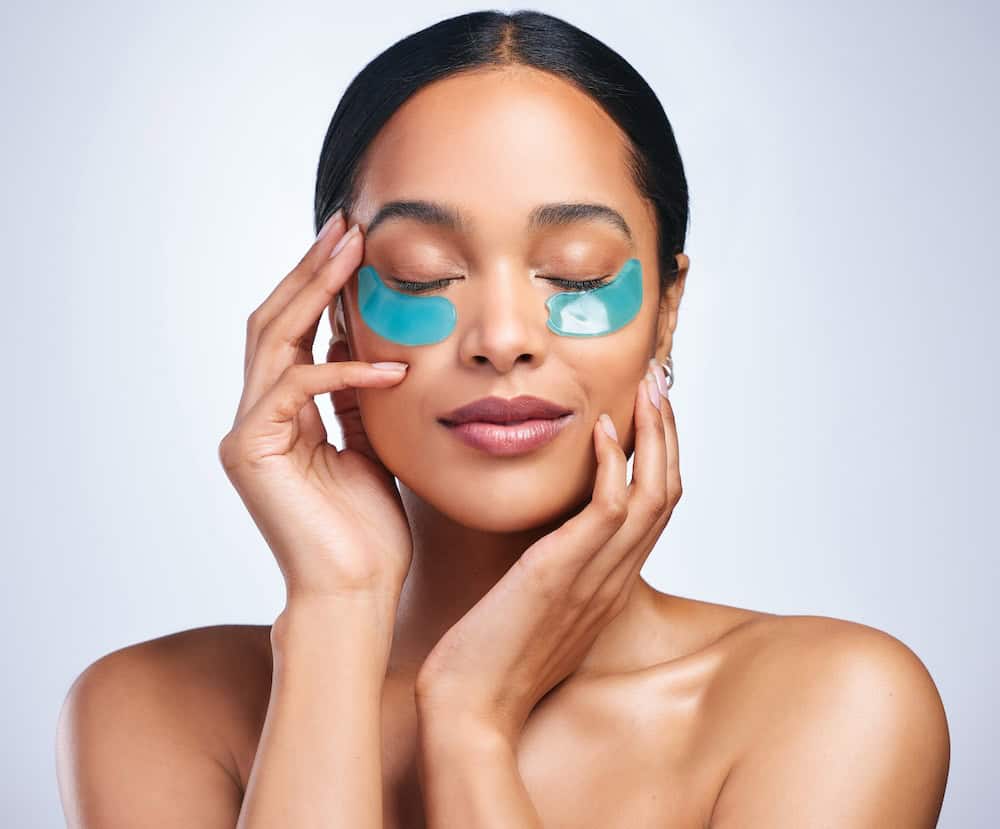
Written by Dr Vahe Introduction Polynucleotides have revolutionised aesthetic medicine, offering natural, regenerative solutions for skin and hair rejuvenation. These biocompatible treatments, derived from DNA or RNA fragments, work by hydrating, repairing, and supporting tissue regeneration. By stimulating collagen production and improving skin elasticity, polynucleotides are an excellent alternative to traditional fillers and are suitable for various areas and concerns. At Astrum Medical, we are proud to offer the most advanced polynucleotide treatments, ensuring our clients achieve tailored, effective results with the highest-quality brands. What Are Polynucleotides? Polynucleotides are fragments of DNA or RNA that promote skin repair, hydration, and regeneration. By activating fibroblasts and supporting cellular regeneration, they help reduce fine lines, improve elasticity, and even stimulate hair growth. Top Polynucleotide Brands and Their Types Here’s a breakdown of the most popular brands, their specific types, and the concerns they address. 1. Rejuran Origin: South Korea Overview: Rejuran features high-purity salmon DNA for regenerative and anti-inflammatory effects. Types: Rejuran Healer: For overall facial rejuvenation, targeting fine lines, large pores, and scars. Rejuran I: Specially designed for the delicate under-eye area, improving hydration and minimising fine lines. Rejuran S: Effective for acne scars and deep scar healing. Best for: Rejuran Healer for facial repair, Rejuran I for under-eyes, and Rejuran S for scar treatment. 2. Plenhyage Origin: Italy Overview: Plenhyage is focused on collagen stimulation and improving skin elasticity, making it suitable for anti-ageing treatments. Types: Plenhyage Medium: Ideal for mild signs of ageing on the face and neck. Plenhyage Strong: Offers intense lifting and firmness, targeting mature skin on the neck, décolletage, and hands. Best for: Plenhyage Medium for early anti-ageing signs and Plenhyage Strong for mature skin rejuvenation. 3. Nucleofill Origin: Italy Overview: Nucleofill combines hydration, lifting, and protection, with formulations for both skin and hair rejuvenation. Types: Nucleofill Light: Ideal for sensitive areas like the eyes and lips. Nucleofill Hair: Designed to revitalise the scalp and stimulate stronger hair growth. Nucleofill Strong (25 mg): Offers deep lifting and hydration for mature or dehydrated skin. Best for: Nucleofill Light for delicate anti-ageing, Nucleofill Hair for scalp health, and Nucleofill Strong for advanced facial rejuvenation. 4. Chroma PhilArt Origin: Austria (by Croma-Pharma) Overview: Chroma PhilArt combines polynucleotides with antioxidants for skin rejuvenation and protection. Types: PhilArt: For general skin rejuvenation, improving hydration and elasticity. PhilArt Eye: Specially designed for the delicate under-eye area, reducing puffiness and dark circles. PhilArt Skin Booster: Enhances overall skin quality, delivering hydration and firmness. Best for: PhilArt for overall rejuvenation, PhilArt Eye for under-eye treatment, and PhilArt Skin Booster for skin improvement. 5. Plinest Origin: Italy (by Mastelli) Overview: Plinest, made from salmon DNA, offers diverse formulations for hydration, lifting, and targeted treatments for skin and hair concerns. Types: Plinest Classic: Improves skin radiance, elasticity, and targets signs of ageing like fine lines and uneven texture. Plinest Fast: A concentrated formula for quicker results, ideal for the face and neck, especially for eye bags and dark circles. Plinest Eyes: Specifically for the delicate under-eye area, refreshing and smoothing the skin. Plinest Body: Designed for larger areas, such as arms and knees, where the skin is thicker than the face. Plinest Newest: Combines hyaluronic acid and mannitol, targeting older patients with dry skin. Plinest Hair: Stimulates hair follicle growth and helps manage hair loss. Plinest One: Reduces the appearance of stretch marks by promoting collagen and elastin production. Best for: Plinest Classic for general anti-ageing, Plinest Fast for quick results, Plinest Eyes for under-eyes, Plinest Body for thicker skin areas, and Plinest Hair for scalp health. 6. Ameela Origin: Italy Overview: Ameela stands out for its versatile formulations designed for comprehensive rejuvenation, hydration, and lifting across different areas of the body. Types: Ameela Face Rejuvenation: Focused on facial anti-ageing and hydration. Ameela Eyes: Targets puffiness and dark circles under the eyes. Ameela Eyes/Face/Neck/Hair: A multi-use formulation for comprehensive rejuvenation. Ameela Body: Treats larger areas like arms and abdomen for improved firmness and tone. Best for: Ameela offers an all-encompassing solution for face, body, and hair. Its versatility and effectiveness make it the best polynucleotide treatment option for clients seeking comprehensive results. 7. Lumi Eyes Origin: South Korea Overview: Lumi Eyes treats under-eye puffiness, dark circles, and fine lines with a focus on hydration and brightening. Best for: Under-eye rejuvenation and hydration. 8. Ami Eyes Origin: South Korea Overview: Combines polynucleotides with brightening agents for enhanced under-eye revitalisation. Best for: Brightening and hydrating tired under-eyes. 9. Pure Eyes Origin: South Korea Overview: Provides deep hydration and repair for the thin, delicate under-eye skin. Best for: Hydrating and firming the under-eye area. Why Choose Ameela at Astrum Medical? At Astrum Medical, we offer the full range of polynucleotide treatments, including the highly versatile and effective Ameela. Whether you’re targeting the face, under-eye area, body, or hair, Ameela’s comprehensive formulations deliver natural, long-lasting results. Book your consultation today at Astrum Medical and discover how polynucleotides like Ameela can transform your skin and hair.
Mounjaro Weight Loss Injection and PCOS: A Game-Changer for Women’s Health
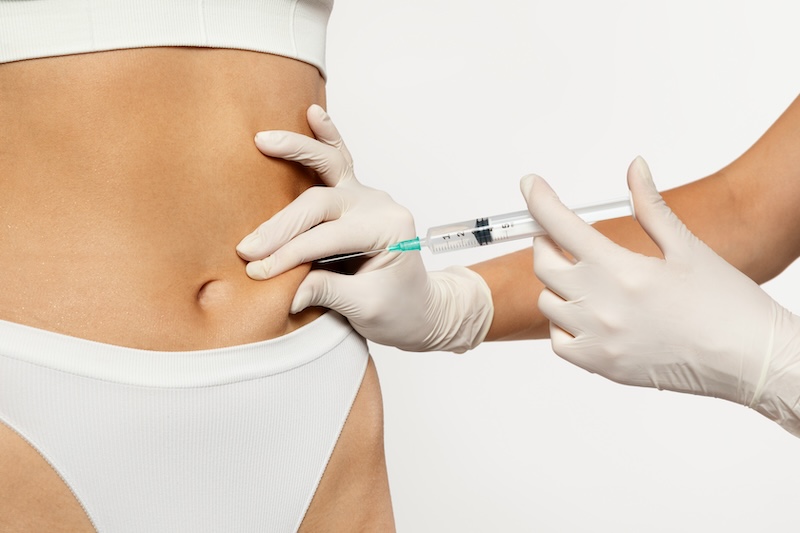
Written and reviewed by Dr Vahe Polycystic Ovary Syndrome (PCOS) is a complex hormonal disorder that affects millions of women worldwide. One of its most challenging symptoms is weight gain, which is often resistant to traditional weight loss methods. This, coupled with insulin resistance, makes managing PCOS difficult for many women. Recently, Mounjaro (Tirzepatide) has emerged as a breakthrough medication for weight loss. Although initially developed for managing type 2 diabetes, its exceptional results in promoting weight loss have made it a potential game-changer for women with PCOS. In this blog, we will explore the connection between PCOS and weight gain, how Mounjaro works, its benefits for women with PCOS, and what makes it a promising solution for long-term weight management. Understanding PCOS and Its Impact PCOS is a hormonal imbalance that primarily affects women of reproductive age. The condition is characterised by: Irregular or absent menstrual periods. Excess androgen (male hormone) levels, leading to acne, hair thinning, or excessive facial and body hair (hirsutism). Polycystic ovaries, where the ovaries are enlarged with small fluid-filled sacs. How PCOS Causes Weight Gain One of the hallmarks of PCOS is insulin resistance, a condition where the body’s cells become less responsive to insulin. Insulin resistance causes the pancreas to produce more insulin, leading to elevated blood sugar levels, fat storage, and cravings for carbohydrate-rich foods. This cycle often results in weight gain, particularly around the abdomen, which is more difficult to lose with standard diet and exercise regimens. The Challenges of Weight Loss in PCOS For women with PCOS, weight loss can feel like an uphill battle due to: Hormonal imbalances that disrupt appetite regulation. Slower metabolism. Increased cravings caused by insulin resistance. Higher likelihood of developing depression or anxiety, which can impact motivation. Maintaining a healthy weight is crucial for managing PCOS symptoms, as even modest weight loss (5–10% of body weight) can: Improve menstrual regularity. Reduce insulin resistance. Lower androgen levels, alleviating symptoms like acne and excessive hair growth. What is Mounjaro (Tirzepatide)? Mounjaro (tirzepatide for weight loss) is a revolutionary injectable medication initially approved for managing type 2 diabetes. It belongs to a new class of drugs called dual glucose-dependent insulinotropic polypeptide (GIP) and glucagon-like peptide-1 (GLP-1) receptor agonists. While GLP-1 receptor agonists like Ozempic and Wegovy have already shown promise in weight management, Mounjaro takes it a step further by also targeting the GIP receptor. This dual-action mechanism amplifies its ability to regulate blood sugar levels and promote weight loss. How the Mounjaro Weight Loss Injection Works Mounjaro mimics two naturally occurring hormones, GIP and GLP-1, which play essential roles in appetite control, insulin sensitivity, and glucose metabolism. Mechanisms of Action: Regulates Appetite: Mounjaro slows gastric emptying (the process by which food leaves the stomach), making you feel fuller for longer. It also acts on the brain’s appetite centres, reducing hunger and food cravings. Improves Insulin Sensitivity: By enhancing the body’s response to insulin, Mounjaro helps lower blood sugar levels and combat insulin resistance—a key driver of PCOS symptoms. Promotes Fat Loss: Mounjaro shifts the body’s energy balance, encouraging fat burning and reducing fat storage, particularly in the abdominal area. These effects make it particularly effective for women with PCOS, who often struggle with both insulin resistance and weight gain. The Benefits of Mounjaro for PCOS While more studies are needed to assess Mounjaro’s direct impact on PCOS, its mechanisms align closely with the needs of women managing this condition. Here’s how Mounjaro can help: 1. Significant Weight Loss Clinical trials have shown that Mounjaro helps patients lose up to 20% of their body weight. For women with PCOS, this level of weight loss can dramatically improve symptoms and overall quality of life. 2. Improved Insulin Resistance By enhancing insulin sensitivity and lowering blood sugar levels, Mounjaro addresses one of the root causes of PCOS. Better insulin control can lead to: Reduced fat storage. Lower androgen levels, improving symptoms like acne and hirsutism. Improved menstrual regularity. 3. Reduction in Inflammation PCOS is often accompanied by chronic low-grade inflammation, which worsens insulin resistance and increases the risk of cardiovascular disease. Mounjaro’s effects on fat loss and metabolic health may help reduce inflammation over time. 4. Regulation of Appetite and Cravings For women struggling with carb cravings or binge eating due to insulin resistance, Mounjaro’s appetite-suppressing effects can be life-changing. This helps in adopting and maintaining healthier eating habits. 5. Support for Long-Term Weight Management Unlike fad diets or short-term solutions, Mounjaro offers a sustainable way to manage weight when combined with lifestyle changes such as a balanced diet and regular exercise. Combining Mounjaro with Lifestyle Changes While Mounjaro is a powerful tool, it is most effective when used alongside healthy lifestyle modifications. Diet: Focus on a low-glycaemic index (GI) diet, rich in whole grains, lean proteins, healthy fats, and fibre. Limit sugary foods and refined carbohydrates, which can worsen insulin resistance. Incorporate anti-inflammatory foods, such as fatty fish, nuts, seeds, and leafy greens. Exercise: Engage in regular physical activity, including a mix of aerobic exercises (e.g., walking, cycling) and strength training to improve insulin sensitivity and build muscle. Aim for at least 150 minutes of moderate exercise per week. Stress Management: Practice mindfulness, yoga, or meditation to reduce stress, which can exacerbate PCOS symptoms and trigger weight gain. At Astrum Medical, we combine Mounjaro treatment with personalised lifestyle coaching to maximise results and help patients achieve sustainable improvements in their health. Is Mounjaro Safe for Women with PCOS? Mounjaro is generally well-tolerated, but like any medication, it may cause side effects. Common side effects include: Nausea or vomiting. Diarrhoea or constipation. Fatigue. These side effects are usually mild and tend to improve as the body adjusts to the medication. However, it’s essential to consult with a healthcare professional before starting Mounjaro, especially if you have pre-existing medical conditions or are taking other medications. Mounjaro and Fertility in PCOS For women with PCOS who are trying to conceive, Mounjaro may offer additional benefits. By reducing insulin resistance and promoting
Which Non-Surgical Aesthetic Treatment Is Right for You?
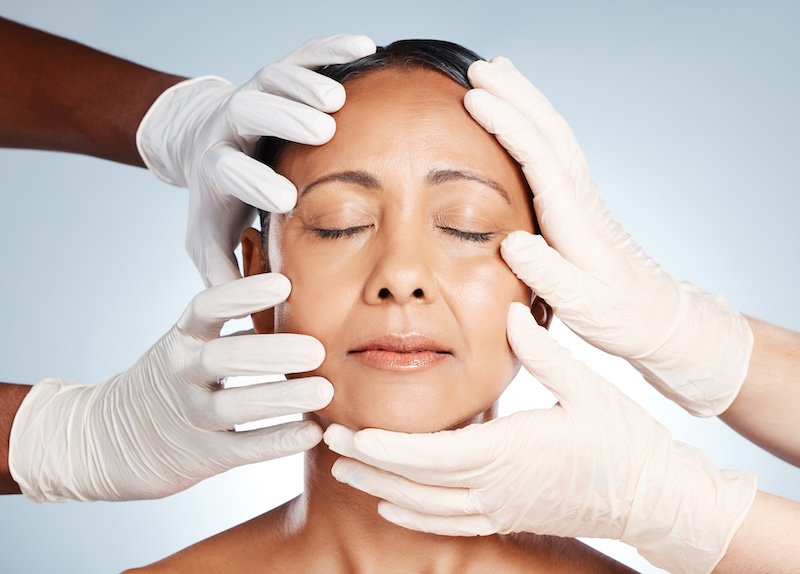
Profhilo Structura vs Sculptra: Which Non-Surgical Aesthetic Treatment Is Right for You? With non-surgical aesthetic treatments having their heyday, two options are talked about the most for really lifting the skin to a more voluminous, youthful look and improving its quality: Sculptra and Profhilo Structura. While both are excellent, each works in different ways and thus is really suited for different issues. So, which is for you? Let’s look a little deeper to see what the real differences are between Sculptra and Profhilo Structura. Sculptra: Volume that Truly Lasts, Natural Collagen Stimulation Sculptra is an injectable collagen stimulant that works to help restore lost facial volume and smooth out deep lines over time. Unlike traditional dermal fillers, Sculptra does not add instant volume. Instead, Sculptra encourages your skin to create its own collagen over time. In this manner, natural, long-lasting results that can last as long as two years are achieved. Sculptra is particularly effective for deep wrinkles, hollow cheeks, and general facial laxity, whether that is due to aging or weight loss. It’s a popular choice for those seeking a more subtle, gradual improvement rather than the immediate volume boost offered by hyaluronic acid-based fillers. Key Benefits of Sculptra: It works by stimulating one’s body to start producing more of its natural collagen. This allows a natural younger look. Long-term outcome: Since collagen is built up gradually, such results may last up to two years or even more, taking maintenance sessions into consideration. Subtle, Gradual Changes: In the case of a much subtler transformation, when suddenly fillers would appear, Sculptra offers a soft yet sure improvement. Deep Volumization: It is best suited for problems related to hollowed cheeks, deep folds, and atrophy of facial volume. Profhilo Structura: The Hydrating Skin Booster with Lifting Power While Profhilo is well-renowned for its skin-boosting and hydrating properties, Profhilo Structura is a bit more advanced and new, joining those skin remodelings with subtle lifting effects. Profhilo Structura remained based on ultra-pure hyaluronic acid; however, it is designed to go deeper and perform by providing hydration and supporting the structure. Profhilo Structura does not work in the mode of filling the lines, but it diffuses homogeneously under the skin and induces remodeling of the tissues to basically improve the quality of the skin. It is particularly indicated for crepey skin, enhancing elasticity and giving the face a firmer look that is more lifted. The key benefits of Profhilo Structura include: Deep Hydration: Profhilo Structura provides extreme skin hydration, reducing the look of tired and languid skin while helping the skin be plump and fresh. Tissue Remodelling: This will help remodeling of skin from inside, hence improving elasticity, and overall health of the skin. Lifting Effect: Unlike the original Profhilo, Profhilo Structura comes along with a gentle lifting effect, making it great for anyone who would like to firm and tighten saggy skin. It is a quick procedure with a very short-time expenditure, thus minimal downtown-one great advantage for people on the go. How They Compare Aspect Sculptra Profhilo Mechanism Collagen stimulation Hydration & skin remodeling Main Benefit Long-lasting volume & natural lift Deep hydration & subtle lifting Ideal For Deep wrinkles, hollow cheeks, volume loss Fine lines, skin laxity, dull, tired skin Results Gradual, long-lasting (up to 2 years) Quick, with visible effects in weeks Treatment Frequency Requires multiple sessions, every 1-2 years Typically 2 sessions, top-ups yearly Downtime Minimal, but some redness or swelling Very little, mild bruising at most Which Treatment Is Right for You? Go for Sculptra if you want to restore volume, especially in places like the cheeks, and also wish for long-lasting, progressive improvements. Sculptra works even better when you have deeper lines, hollow areas, or significant volume loss, and you want to get a more natural-looking result that develops over time. Choose Profhilo Structura when your concerns are more related to skin texture, laxity, and hydrating factors of the skin. Whenever it has become dull, sagged slightly, or doesn’t snap back with elasticity, then Profhilo Structura will be in a position to return a firmer, brighter, more youthful appearance with minimal downtime. Can they be combined? Yes! In many patients, the combination of Sculptra with Profhilo Structura can give them the best of both worlds: deep collagen stimulation from Sculptra to add volume and lift, with the intense hydration skin remodeling benefits of Profhilo Structura. This combination can provide comprehensive facial rejuvenation, addressing both structural volume loss and improving overall skin quality. Final Thoughts Both Sculptra and Profhilo Structura are excellent treatments in their own right, providing potential ways to achieve different ends. Whether you’re wanting to restore lost volume or revitalize the texture and firmness of your skin, Astrum Medical can offer both treatments to help meet your unique aesthetic goals. Book in for a consultation today to find out which treatment-or combination-suits you best!
Reclaiming Youthful Skin in a New Chapter (Menopause and Sculptra)

Menopause and Sculptra: Reclaiming Youthful Skin in a New Chapter Menopause is a major milestone in a woman’s life, bringing with it significant changes to the body, particularly the skin. As hormone levels shift, many women notice their skin becoming drier, with more wrinkles, sagging, and a loss of volume in the face. These changes can impact confidence, but many women are discovering effective ways to manage them. One emerging option is Sculptra, an injectable treatment designed to stimulate collagen and help restore volume for a youthful and natural look. In this blog, we’ll explore how menopause impacts the skin, the science behind Sculptra, and why it’s an ideal solution for rejuvenating the skin during this new phase. Understanding Menopause and Skin Ageing Menopause, usually occurring between ages 45 and 55, is marked by a gradual reduction in oestrogen and progesterone. These hormones play essential roles in keeping skin hydrated, firm, and elastic. Oestrogen, in particular, helps maintain moisture, stimulates collagen production, and supports skin thickness. With declining oestrogen levels, certain changes often become noticeable: Reduced Collagen Production: Collagen is the protein that gives skin its firmness and elasticity, and its levels naturally decline with age. Menopause accelerates this process, with research showing that up to 30% of skin’s collagen can be lost within the first five years. This decline makes skin thinner, more fragile, and more prone to wrinkles. Loss of Skin Elasticity: Elastin fibres, which give skin its ability to “bounce back,” also break down. With fewer elastin fibres, skin becomes less elastic, contributing to sagging and lines. Increased Dryness: Menopause can also reduce the skin’s natural oils, leading to a drier complexion. Dry skin can appear dull, emphasising wrinkles and contributing to an overall tired look. Volume Loss: Hormonal changes cause a breakdown of fatty tissue, especially around the cheeks, temples, and jawline, leading to a sunken or hollow appearance. These combined effects can make the skin look older, which many women find disheartening. The Science Behind Sculptra Sculptra is a unique treatment option offering a promising solution for menopausal skin. Unlike traditional fillers, which provide immediate volume, Sculptra works by stimulating the body’s collagen production. It contains poly-L-lactic acid (PLLA), a biodegradable compound that triggers collagen synthesis over time. Rather than an instant lift, Sculptra delivers gradual, natural-looking results that unfold over several months. Sculptra’s benefits align with the specific needs of menopausal skin: Volume Restoration: By promoting collagen production, Sculptra helps restore lost volume in the cheeks, temples, and jawline, giving a youthful yet natural appearance. Smoother, Firmer Skin: The collagen boost also improves skin elasticity, helping reduce wrinkles. Long-Lasting, Gradual Results: Sculptra’s gradual effect suits those seeking subtle, lasting improvements, with results that can last up to two years or more. How Sculptra Helps Menopausal Skin Sculptra offers targeted solutions for the skin changes that come with menopause: Rebuilding Collagen: Collagen decline is accelerated during menopause, causing wrinkles and volume loss. Sculptra encourages the skin to produce new collagen, which helps lift sagging skin and smooth wrinkles. This gradual transformation creates a refreshed appearance without looking overdone. Restoring Volume and Fullness: Menopause can lead to volume loss, especially in the cheeks, temples, and jawline. Sculptra rebuilds lost volume, enhancing facial contours and balance for a more youthful look. Improving Skin Quality: Skin often becomes dull and fragile with age. Sculptra’s collagen-stimulating properties help restore resilience and a natural glow, improving both the feel and look of the skin. Reducing Fine Lines and Wrinkles: Rather than targeting specific wrinkles, Sculptra provides a holistic approach by strengthening the skin’s support structure. This method is especially beneficial for fine lines around the mouth, nasolabial folds, and marionette lines. Long-Term Results: Sculptra’s gradual effects are ideal for those who want lasting, natural improvements. With results that develop over months, Sculptra delivers a look that can last up to two years, depending on the individual. What to Expect with Sculptra Treatment If you’re considering Sculptra, here’s what to anticipate: Initial Consultation: Before treatment, a consultation with a qualified practitioner is essential. They will assess your skin’s needs, discuss your goals, and create a tailored treatment plan to ensure optimal results. Treatment Session: During the procedure, Sculptra is injected into specific areas of the face. The injections are typically painless or involve minimal discomfort, especially with the use of numbing agents. Treatment usually takes around 30-60 minutes, depending on the areas addressed. Gradual Transformation: Unlike traditional fillers, Sculptra doesn’t deliver immediate results. Instead, you’ll notice gradual improvements as your skin begins to produce new collagen. For many women, this subtle enhancement is a plus, as it avoids the sudden “post-procedure” look that some treatments can create. Maintenance: After an initial series of treatments (often three sessions spaced a few weeks apart), Sculptra’s effects can last for two years or longer. Periodic touch-ups can help maintain results, especially as natural ageing continues. Who is a Good Candidate for Sculptra? Sculptra is suitable for women experiencing moderate to severe facial volume loss, wrinkles, or sagging due to menopause. However, certain factors may make Sculptra more or less appropriate: Skin Type and Health: Sculptra works well for most skin types, but it’s best suited for those with relatively healthy skin and no history of autoimmune conditions. Desired Results: If you’re seeking a gradual, natural enhancement rather than an immediate, dramatic change, Sculptra could be ideal. It’s especially effective for women who prefer long-lasting results. Treatment Goals: Sculptra is a collagen-stimulator, not a wrinkle-filler. If you’re looking to build facial volume and rejuvenate skin, Sculptra will work well. However, it’s not ideal for superficial lines or small, targeted areas. Combining Sculptra with Other Treatments Sculptra can often be combined with other treatments to create a comprehensive anti-ageing approach: Botox or Dysport: These can smooth dynamic wrinkles like crow’s feet or forehead lines, complementing Sculptra’s volume-restoring effects. Chemical Peels and Microneedling: These treatments can improve skin texture, reduce pigmentation, and enhance Sculptra’s overall results. Topical Skincare: Using a high-quality skincare regimen, including retinoids, hyaluronic
How Botox Can Help Your Skin Through Menopause
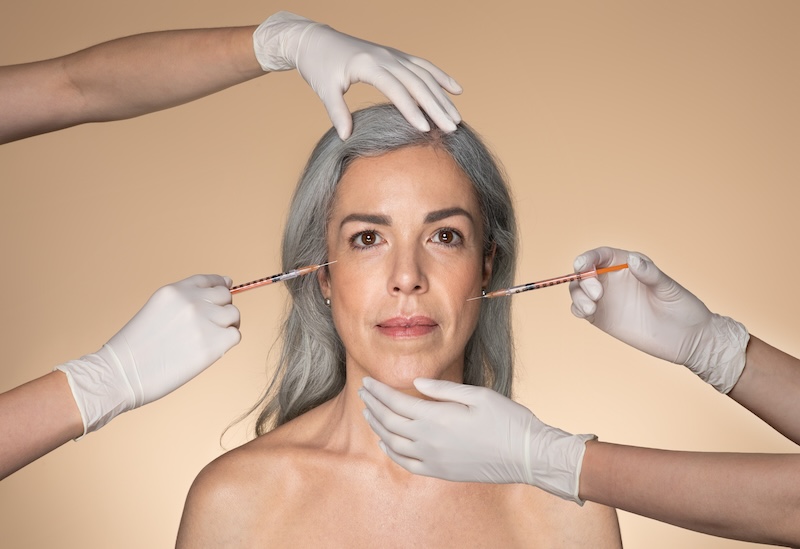
How Botox Can Help Your Skin Through Menopause Menopause marks a significant turning point in a woman’s life, bringing about changes in health, mood, and appearance. While menopause is a natural and inevitable process, the physical changes it brings – particularly to the skin – can sometimes feel overwhelming. With declining oestrogen levels, the skin becomes more prone to wrinkles, sagging, and loss of firmness. For many women, this is a time when traditional skincare products alone may no longer be enough to maintain a youthful complexion. Enter Botox, a non-invasive treatment that can help manage some of the most common menopausal skin concerns. Understanding the Impact of Menopause on Skin Before we dive into how Botox can help, it’s important to understand the effects of menopause on the skin. As oestrogen levels fall, the production of collagen and elastin—the proteins responsible for keeping skin firm, elastic, and hydrated—declines. This causes the skin to become thinner, drier, and less able to repair itself. Some of the most common skin changes during menopause include: Loss of Elasticity: Without sufficient collagen and elastin, skin begins to sag and lose its youthful “bounce.” This is particularly noticeable around the jawline and neck. Increased Wrinkles: Oestrogen helps maintain skin thickness and moisture, so when levels drop, wrinkles can deepen, especially around the forehead, eyes, and mouth. Dryness: Menopausal skin often becomes drier due to a reduction in natural oils, leading to a rough texture and exacerbating the appearance of fine lines. Thinning Skin: The skin becomes more fragile and prone to damage because it’s thinner and has a slower cell turnover rate, making it harder to maintain a radiant complexion. Dullness and Age Spots: As cell regeneration slows down, the skin’s natural glow fades, and age spots or pigmentation issues may develop more easily. These changes, though natural, can be difficult to accept. While topical treatments can help to some extent, many women seek more effective, long-lasting solutions to rejuvenate their skin during menopause. Botox has emerged as one of the most reliable and accessible treatments to address these concerns. What is Botox? Botox, short for botulinum toxin, is a neurotoxin derived from Clostridium botulinum. When injected in small, controlled doses, it temporarily relaxes the muscles responsible for creating wrinkles. It works by blocking the nerve signals that tell muscles to contract, preventing the repetitive facial movements that lead to dynamic wrinkles – such as crow’s feet, frown lines, and forehead creases. Over the years, Botox has gained immense popularity for its ability to smooth out fine lines and wrinkles. However, beyond its well-known cosmetic uses, Botox has become increasingly sought after by menopausal women as part of their skincare regime. How Botox Helps Combat Menopausal Skin Changes Botox offers targeted relief from some of the most visible and frustrating effects of menopause on the skin. Here are several ways Botox can assist women navigating this phase of life: 1. Smoothing Fine Lines and Wrinkles One of the most noticeable changes during menopause is the deepening of fine lines and wrinkles. As collagen production slows, skin becomes less elastic and less able to spring back after repeated facial movements. This leads to the formation of deeper lines, particularly on the forehead, between the eyebrows (glabellar lines), and around the eyes (crow’s feet). Botox works by relaxing the muscles beneath these areas, reducing the intensity of the muscle contractions that cause wrinkles. The result is smoother, more youthful-looking skin. Many women find that Botox helps to erase years of ageing from their face, creating a more refreshed and relaxed appearance. 2. Lifting and Tightening Menopause often causes the skin to lose its firmness, particularly around the lower face and neck. This sagging, commonly referred to as “jowls” or “turkey neck,” can make a woman’s face appear older and more tired than it is. Botox can be used to create a subtle lifting effect, especially in areas prone to sagging. By targeting specific muscles, Botox can help to lift the jawline, soften the appearance of jowls, and even reduce sagging around the neck. While Botox alone cannot replace the effects of a surgical facelift, it can provide a non-invasive option for women who want a subtle, natural-looking lift without undergoing surgery. 3. Preventing the Formation of Deeper Wrinkles One of the great advantages of Botox is its ability to act as a preventative measure. By reducing the movement of facial muscles, Botox prevents dynamic wrinkles—caused by expressions such as frowning, squinting, or raising the eyebrows—from becoming static wrinkles, which are deeper and more permanent. For women in the early stages of menopause, Botox can help maintain smooth skin by preventing new wrinkles from forming. Even for those who have already noticed significant changes, Botox can slow down further wrinkle development, allowing them to maintain a youthful appearance for longer. 4. Improving Skin Texture While Botox is primarily known for its ability to reduce wrinkles, it can also improve overall skin texture. By smoothing out the skin and relaxing underlying muscles, Botox can create a more even, polished look, which enhances the skin’s overall appearance. Some women report that their skin looks more radiant and refined after Botox treatments, with a noticeable reduction in rough patches and fine lines. This can be especially beneficial for menopausal women, whose skin often becomes dull and uneven. 5. Boosting Confidence During Menopause The physical changes brought about by menopause can sometimes lead to a dip in self-confidence. Many women find that looking in the mirror and seeing new wrinkles, sagging, or dull skin can be disheartening. Botox offers a way to take control of these changes and restore a sense of confidence. By addressing the visible signs of ageing, Botox helps women feel more comfortable in their skin, which can positively impact their mood and overall sense of well-being. The refreshed, youthful appearance that Botox provides can be empowering, helping women feel more confident in both their personal and professional lives. Botox vs. Other Treatments for Menopausal Skin When



